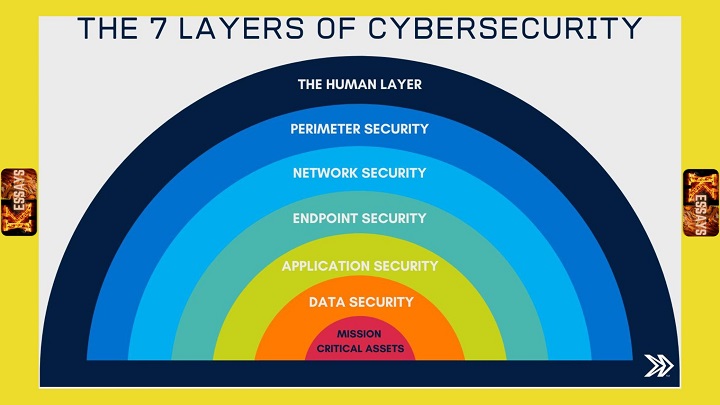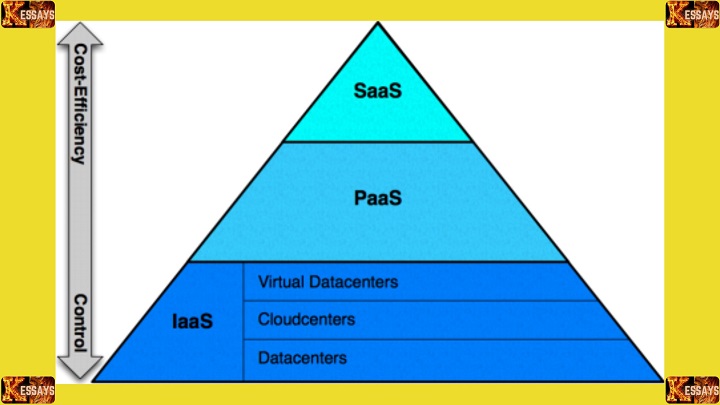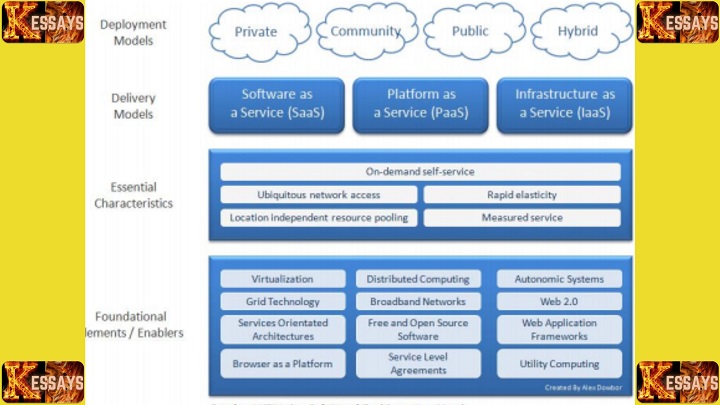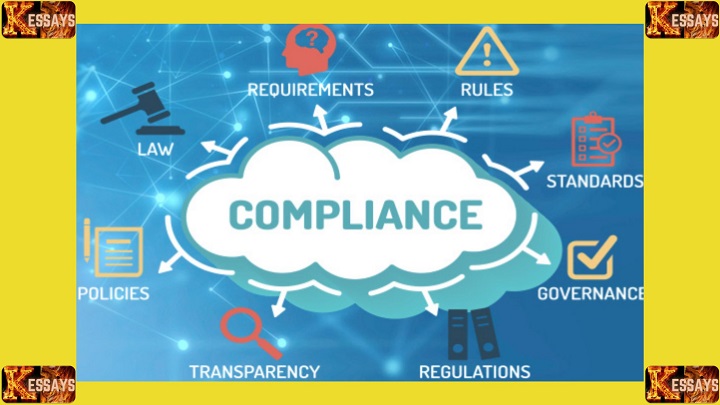Introduction to Cloud Computing:
Cloud Computing has emerged as a transformative technology that has revolutionized the way businesses and individuals store, access, and process data. In this Cloud Computing essay, we will delve into the concept of Cloud Computing, its benefits, challenges, and its impact on various industries. Cloud Computing refers to the delivery of computing services over the internet, providing on-demand access to a shared pool of computing resources, including servers, storage, databases, software, and applications.
-
The Advantages of Cloud Computing
Cloud Computing offers numerous advantages that have propelled its widespread adoption across industries. Here are some key benefits:
Scalability and Flexibility
Cloud Computing offers unparalleled scalability and flexibility. Organizations can easily adjust their computing resources based on demand, whether it's increasing resources during peak periods or scaling them down during slower periods. This flexibility allows businesses to optimize their resource allocation and avoid the need for costly hardware upgrades or expansions. For example, an e-commerce website experiencing high traffic during a sale event can scale up its server capacity to ensure smooth user experience, and once the event is over, scale it back down to save costs.
Cost Savings
One of the most significant advantages of Cloud Computing is its cost-effectiveness. With traditional on-premises infrastructure, organizations often have to invest in expensive hardware, software licenses, and ongoing maintenance. In contrast, Cloud Computing follows a pay-as-you-go model, where businesses only pay for the resources they consume. This eliminates the need for upfront capital expenditure and allows organizations to allocate their IT budget more efficiently. For small businesses or startups with limited financial resources, Cloud Computing provides an affordable solution to access enterprise-grade technology.

Global Accessibility and Collaboration
Cloud Computing enables seamless access to data, applications, and services from anywhere with an internet connection. This global accessibility is particularly beneficial for organizations with remote or distributed teams. Team members can collaborate in real-time, accessing and working on the same documents or applications simultaneously. Cloud-based productivity tools like G Suite or Microsoft 365 allow for seamless collaboration on documents, spreadsheets, and presentations, enhancing teamwork and productivity. Additionally, employees can work from different locations and still have access to the same set of tools and data, promoting a flexible work environment.
Data Backup and Disaster Recovery
Data loss can have severe consequences for businesses. Cloud Computing provides robust data backup and disaster recovery capabilities, ensuring that organizations can quickly recover from unforeseen events. With data stored in multiple geographically dispersed locations, the risk of losing data due to hardware failures or natural disasters is significantly reduced.
Cloud service providers implement advanced data redundancy and backup mechanisms to ensure data integrity and availability. In the event of an outage or data loss, organizations can restore their data quickly and resume operations, minimizing downtime and ensuring business continuity. Cloud-based backup solutions offer automated backups, point-in-time recovery options, and the ability to replicate data across multiple regions, providing an extra layer of protection for critical business data.
In summary, Cloud Computing offers scalability, cost savings, global accessibility, and robust data backup and disaster recovery capabilities. These advantages have made Cloud Computing a game-changer for businesses across industries. By harnessing the power of the cloud, organizations can optimize their IT infrastructure, improve productivity, and stay competitive in the digital era.
-
Cloud Computing Deployment Models:
There are different deployment models in Cloud Computing, each catering to specific needs and preferences. Let's explore three common deployment models:
Public Cloud
Public Cloud is the most widely adopted deployment model in Cloud Computing. It offers a cost-effective solution as organizations can leverage the infrastructure provided by third-party cloud service providers. Public Cloud services are accessible over the internet and shared among multiple users. The resources, such as virtual machines, storage, and applications, are provisioned on-demand, allowing organizations to scale their operations efficiently.
Public Cloud providers handle the maintenance, security, and updates of the underlying infrastructure, relieving organizations of the burden of managing hardware and software. This model is suitable for businesses of all sizes, particularly those looking for agility, scalability, and cost savings.
Private Cloud
Private Cloud refers to cloud infrastructure that is dedicated to a single organization. It can be hosted on-premises within the organization's data center or by a third-party provider. Private Cloud offers enhanced security, control, and customization options compared to the public cloud. Organizations that handle sensitive data or have strict compliance requirements often choose a private cloud to maintain greater control over their infrastructure and data.
Private Cloud provides the flexibility to tailor the environment to specific needs, allowing organizations to customize security measures, network configurations, and resource allocation. While private clouds require higher upfront investments and ongoing maintenance, they provide organizations with the peace of mind of having dedicated resources and the ability to meet stringent compliance regulations.

Hybrid Cloud
Hybrid Cloud combines the use of both public and private cloud environments, allowing organizations to leverage the benefits of both models. With a hybrid cloud strategy, organizations can run non-sensitive or non-critical workloads in the public cloud, taking advantage of its scalability, cost-effectiveness, and ease of deployment. At the same time, they can keep critical or sensitive data on a private cloud to ensure enhanced security and compliance.
Hybrid Cloud provides the flexibility to move workloads between public and private environments based on specific requirements, workload characteristics, and data sensitivity. This model allows organizations to optimize their cloud strategy, achieve a balance between cost efficiency and security, and leverage the best of both worlds.
In summary, the deployment models in Cloud Computing, including public, private, and hybrid clouds, offer organizations options to suit their unique needs and preferences. Public Cloud provides cost-effectiveness and scalability, while private cloud offers enhanced security and control. Hybrid Cloud combines the benefits of both models, enabling organizations to achieve flexibility and optimization. By carefully considering their requirements, organizations can select the appropriate deployment model and leverage Cloud Computing to drive innovation, enhance agility, and achieve their business objectives.
-
Cloud Computing in Different Industries:
Cloud Computing has had a significant impact on various industries, revolutionizing operations, and opening up new possibilities. Let's explore a few examples:
Healthcare
In the healthcare industry, Cloud Computing has had a profound impact on improving patient care, data management, and research. With Cloud Computing, healthcare organizations can securely store and share patient data, allowing for seamless collaboration among healthcare providers and specialists.
Electronic Health Records (EHR) systems hosted in the cloud enable healthcare professionals to access patient information from any location, promoting better care coordination and reducing errors.
Cloud-based telemedicine services have also become increasingly popular, allowing remote consultations and monitoring of patients, particularly in rural or underserved areas. Furthermore, Cloud Computing facilitates large-scale data analysis, enabling medical researchers to gain insights from vast datasets, accelerate clinical trials, and advance medical knowledge.

Education
Cloud Computing has transformed the education landscape by providing a platform for collaborative learning, online education, and access to educational resources. Cloud-based learning management systems (LMS) have become the backbone of many educational institutions, allowing educators to create, distribute, and manage course materials, assignments, and assessments online.
Students can access educational content, collaborate with peers, and submit assignments remotely, breaking down geographical barriers. Cloud-based virtual classrooms enable real-time interaction and video conferencing, enhancing the learning experience for both students and educators. Additionally, Cloud Computing offers scalable and cost-effective solutions for storing and managing educational resources, enabling educational institutions to efficiently handle large volumes of data.
Finance
Cloud Computing has brought significant benefits to the finance industry, particularly in terms of agility, cost-efficiency, and security. Financial institutions deal with vast amounts of data, including customer information, transactions, and market data. Cloud Computing provides the scalability and processing power required to handle these large datasets, enabling real-time data analysis, fraud detection, and risk modeling.
Cloud-based financial services offer secure platforms for online banking, mobile payments, and investment management. These services provide robust security measures, including data encryption, access controls, and regular audits, ensuring the protection of sensitive financial information. Cloud Computing also offers cost savings by eliminating the need for on-premises infrastructure, maintenance, and software licensing, allowing financial institutions to allocate resources more efficiently and focus on their core competencies.
In conclusion, Cloud Computing has revolutionized industries such as healthcare, education, and finance. Its impact can be seen in improved patient care, enhanced collaboration in education, and increased agility and cost savings in finance. The adoption of Cloud Computing allows organizations in various industries to leverage its benefits, drive innovation, and stay competitive in the digital era. With the continued advancements in Cloud Computing technologies, we can expect further transformation and new opportunities in many other sectors as well.

-
Challenges and Considerations
While Cloud Computing offers numerous benefits, it is essential to address the challenges and considerations associated with its adoption:
- Security and Privacy: As data is stored and processed outside the organization's premises, security and privacy concerns arise. It is crucial to implement robust security measures, such as data encryption, access controls, and regular audits, to protect sensitive information and ensure compliance with regulations.
- Data Transfer and Bandwidth: Uploading and transferring large amounts of data to and from the cloud can be time-consuming and bandwidth-intensive. Organizations must consider their network infrastructure and bandwidth capabilities to ensure smooth data transfer and avoid potential bottlenecks.
- Vendor Selection: Choosing a reliable and reputable cloud service provider is crucial for a successful Cloud Computing implementation. Organizations should evaluate factors such as provider reputation, service-level agreements, data sovereignty, and customer support before making a decision.
- Vendor Lock-In: When adopting Cloud Computing, organizations may face the challenge of vendor lock-in, where switching between cloud service providers can be complex and costly. It is important to consider interoperability and portability of data and applications to avoid dependency on a single provider.
- Downtime and Reliability: Although cloud service providers strive to provide high availability, service outages and downtime can still occur. Organizations should consider the reliability and uptime guarantees offered by providers and have contingency plans in place to mitigate the impact of any potential disruptions.
- Data Governance and Compliance: Cloud Computing involves the storage and processing of data in external environments, which may span multiple jurisdictions. Organizations must ensure compliance with data protection laws, industry regulations, and contractual obligations. It is important to understand the data governance policies and practices of the chosen cloud service provider and ensure that they align with organizational requirements.
- Cost Management: While Cloud Computing offers cost savings, it is crucial to manage cloud costs effectively. Organizations should regularly monitor resource usage, optimize infrastructure provisioning, and leverage cost management tools provided by cloud service providers to avoid unexpected expenses and ensure cost-efficiency.
- Performance and Latency: The performance of cloud-based applications can be influenced by factors such as network latency, distance to data centers, and resource sharing with other users. Organizations should assess the performance requirements of their applications and consider factors such as data center locations and network connectivity to ensure optimal performance.
- Data Loss and Recovery: Despite robust backup and disaster recovery mechanisms, the possibility of data loss still exists. Organizations should have comprehensive data backup strategies and regularly test their data recovery processes to minimize the impact of any potential data loss incidents.
In conclusion, while Cloud Computing offers numerous benefits, organizations must address challenges and considerations related to security, data transfer, vendor selection, downtime, compliance, cost management, performance, and data loss. By carefully evaluating these factors and implementing appropriate strategies and controls, organizations can harness the full potential of Cloud Computing while mitigating risks and maximizing the value of their cloud investments.

Conclusion
In conclusion, Cloud Computing has transformed the IT landscape, offering scalability, flexibility, cost savings, and global accessibility. Its deployment models, including public, private, and hybrid clouds, cater to diverse organizational needs. Cloud Computing has revolutionized industries such as healthcare, education, and finance, enabling new possibilities and enhancing efficiency. However, organizations must address challenges related to security, data transfer, and vendor selection to ensure a successful and secure Cloud Computing implementation. Embracing Cloud Computing can empower organizations to leverage the full potential of technology and drive innovation in the digital era.




